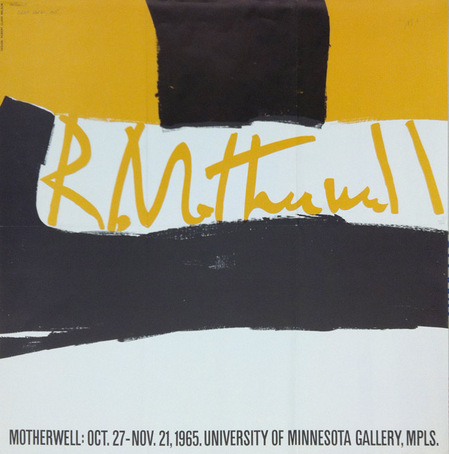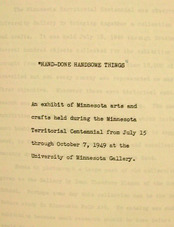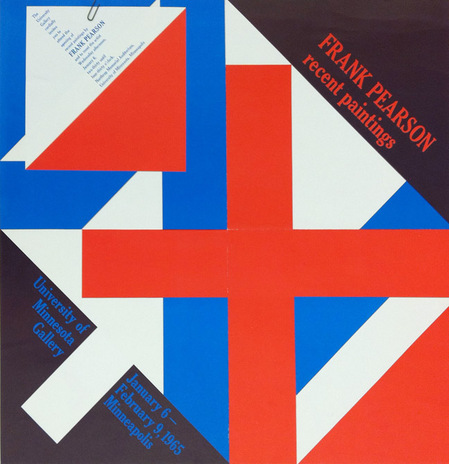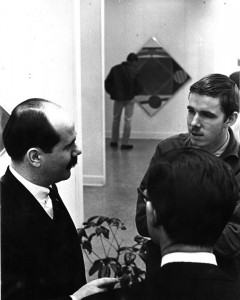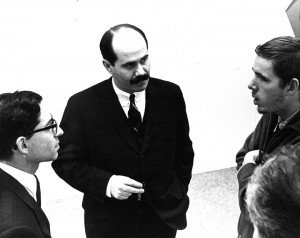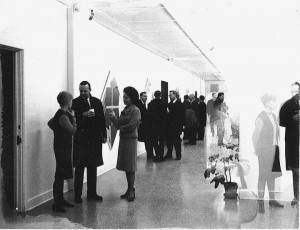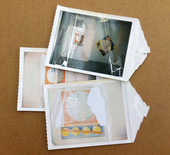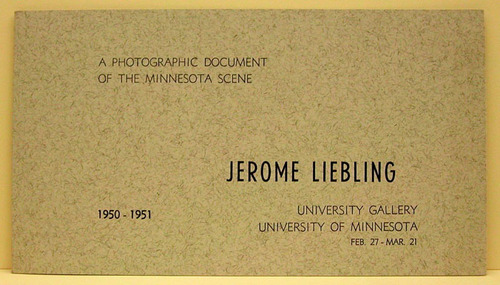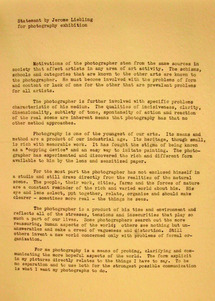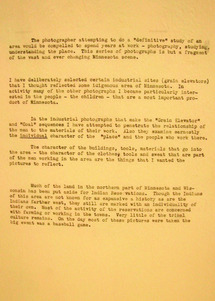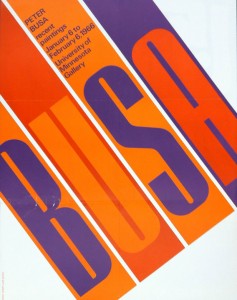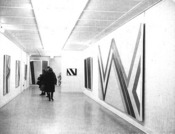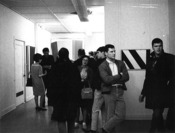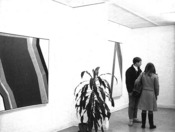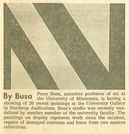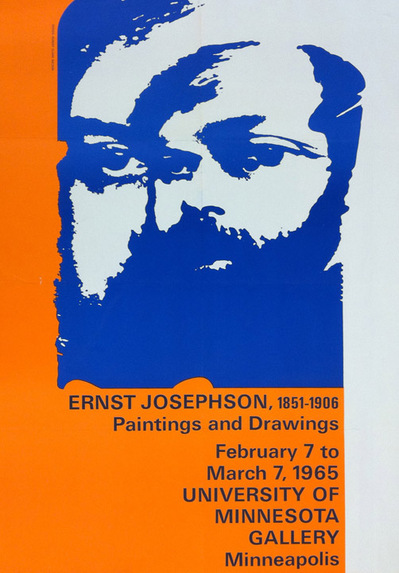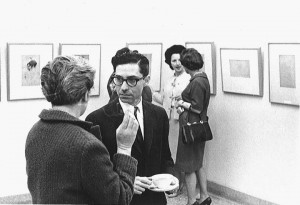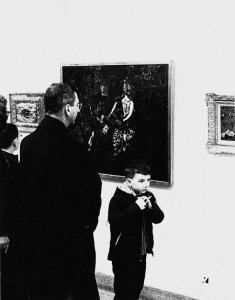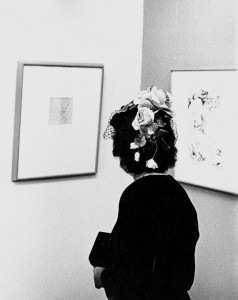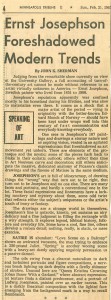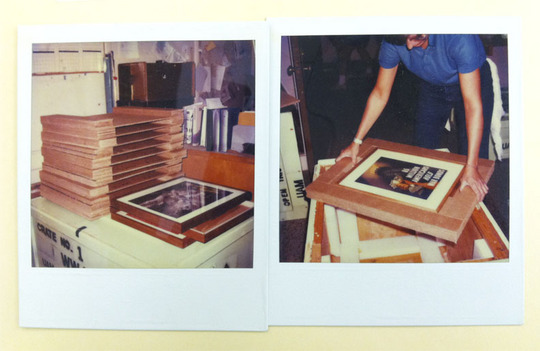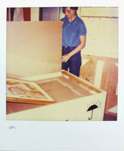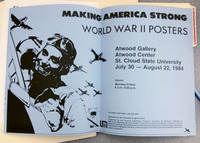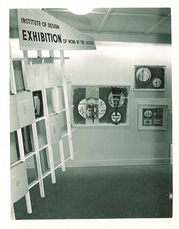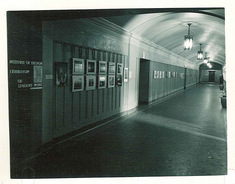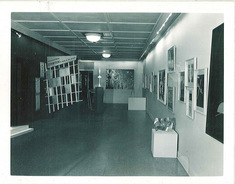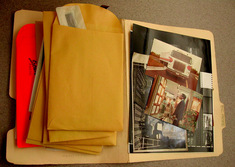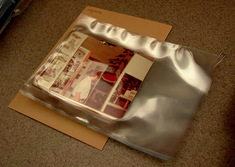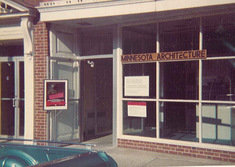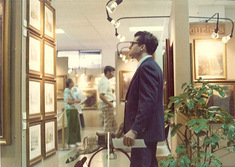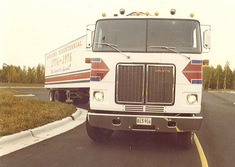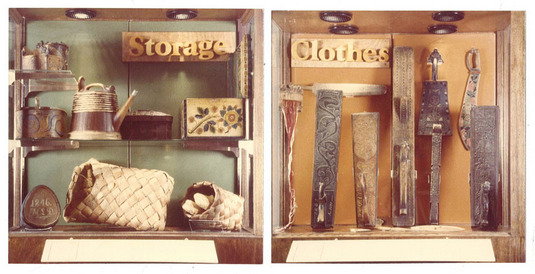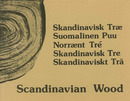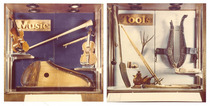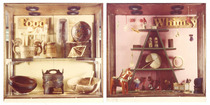Robert Motherwell was featured in the University Gallery in 1965, in a traveling exhibition from the Museum of Modern Art. Motherwell was part of the New York School (which included Jackson Pollock, Mark Rothko, and Willem de Kooning) and his work is likewise in the Abstract Expressionist vein. His distinctive style of painting with rich black blobs and swaths is on display in this poster for the show, and in the photographs from the opening.
The press release from the Gallery describes Motherwell and his style:
Robert Motherwell, one of the foremost contemporary painters, has developed along with his painting a unique eloquence and profundity in the use of collage. Subtleties of feeling and a spirit of tempered freedom are richly stated through the combination of papers and painting. This extraordinary sensitivity and cultivation of style are also shown in his drawings.
The Weisman Art Museum still has in its collection an important piece from Motherwell, called Mural Fragment. This piece caused some controversy when it first came to the University in 1965, to be displayed in the Duluth student center. Some students and faculty petitioned for its removal, stating “We feel a better example of modern art could have been selected, rather than this crude daub that looks like a deformed octopus alongside of two decayed dinosaur eggs.” Beauty is in the eye of the beholder, I guess. The gallery director kept the painting up.
Read more about Motherwell and Mural Fragment here.
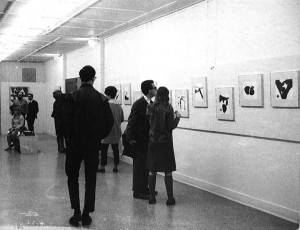
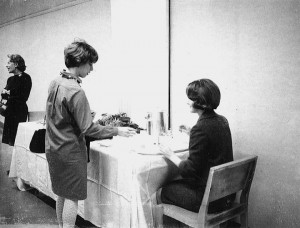
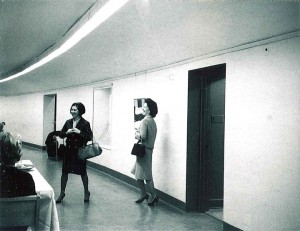
The Motherwell opening at the U Gallery
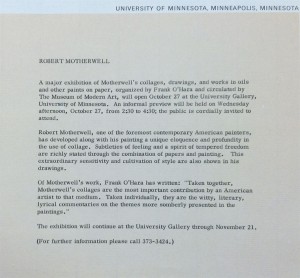
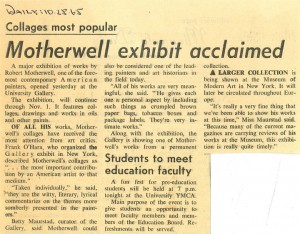
Press release and news clipping from The Daily
